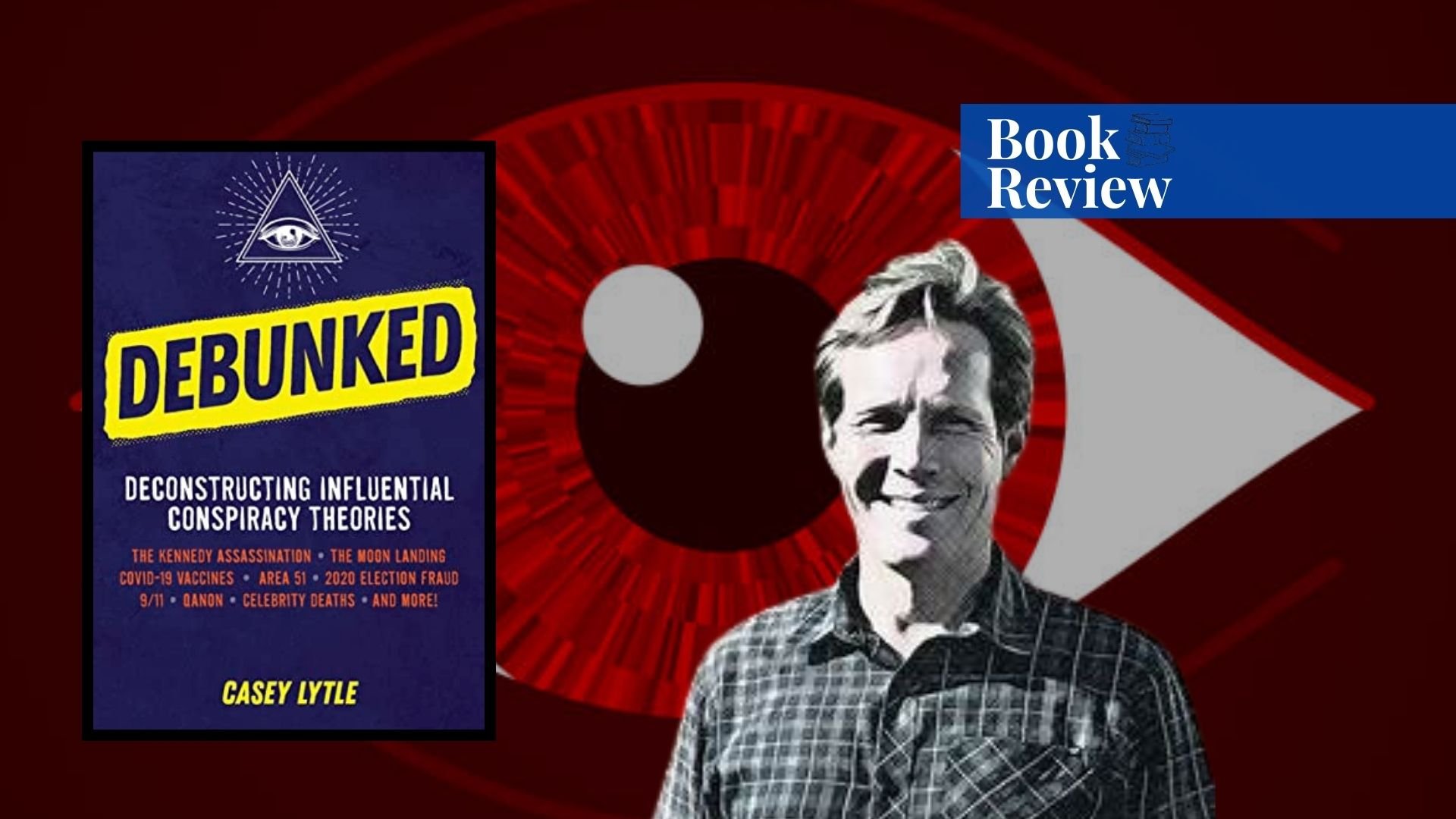Individuals are often readily swayed by conspiracy theories, and this inclination leads them to embrace even the most irrational theories. The architects of these conspiracies strategically construct narratives with such persuasive force that the general populace accepts them as truth. The proliferation of illogical theories underscores the urgency of critical examination and questioning.
“Debunked: Separating the Rational from the Irrational in Influential Conspiracy Theories” is an excellent book that aims to nullify the widespread hold of famous conspiracy theories.
About the Author
As an esteemed professor of psychology and sociology and an active TikToker hailing from the US, author Casey Lytle channels his expertise into dissecting the baseless foundations of a few such theories related to well-known American and international events. Motivated by the questions from his students, Psychology professor Casey Lytle dives in to provide helpful insight in this regard. What is unique about this book is Lytle’s approach—a “project management” lens that systematically questions the rationality and probability of conspiracies.
According to the project management framework, conspiracy theories are dissected based on some key aspects. Who’s making the conspiracy? What’s the motive, and does it practically benefit? Is there a minimum number of people involved in ensuring secrecy? Is there any need for alternating records? How many resources are required? The answers to these questions help predict a conspiracy theory’s rationality and probability. As the project management approach is applied to famous conspiracy theories to check their probability, each chapter illustrates the psychological reasons that make people believe in that particular conspiracy construct.
Lytle dives deep into the psychological factors that drive people to accept irrational conspiracy beliefs. He argues that the need for cognitive closure paves the way for susceptibility to conspiracy theories, with the environment of distrust acting as a catalyst. If nothing works, the advocates’ mantra of such theories becomes “They are omnipotent; everybody is on it.”
Several cognitive traits, prominently confirmation bias, also play a role. The book mentions a sense of superiority that people experience while believing in conspiracy theories. The author also argues that we perpetuate certain conspiracy theories because our brains cling to emotionally attached beliefs.
The narrative highlights the impact of cultivation theory, especially through the lens of movies. This is one of the reasons why people tend to consider the victims of mass shootings as crisis actors. For example, it is the cultivation effect of fictional content that makes people consider events like that of 9/11 as staged ones.
Worth mentioning is the false premise fallacy indicated by Lytle. The author explains how inaccurate premises become a driving force for belief in conspiracy theories. For example, many people consider the moon landing a hoax based on some scientifically invalid premises.
The author provides some examples of conspiracy theories and checks their probability. For instance, the author raises questions about the practicality of the chemtrails theory. The author deconstructs the theory, examining its complexities, from the complexities involving pilots and manufacturers to the visibility of the alleged operation.
The author also mentions various conspiracy theories related to COVID-19. From the virus being declared a hoax to the vaccine being considered a means of population control, numerous theories reached the masses. By applying the project management approach, the author illustrates how these theories are irrational and less probable.
The author discusses iconic conspiracy theories like the Kennedy assassination and the moon landing hoax. On the other hand, the author introduces true conspiracy theories, such as Watergate and Operation Northwood, to some extent. According to the author, it is impossible to grasp a conspiracy’s reality completely. Still, the project management approach helps in the filtration process.
After reading this book, one realises that numerous conspiracy theories lack logical coherence. The author emphatically encourages readers to reassess their beliefs and advocate for a return to rational thought before subscribing to any conspiracy theory.
The most important characteristic of this book that sets it apart is its innovative project management approach to deconstructing conspiracy theories. The book makes the readers reexamine their ideas by asking some basic questions. The structured framework facilitates a critical examination of the rationality behind various conspiracy theories, leading to a prominent realisation of their inherent irrationality.
However, there appears to be a limitation in the geographical scope of the author’s examples. Mostly focusing on conspiracy theories within the American context, the work neglects the global landscape of such phenomena. The author’s Americentric perspective limits the diversity of examples, overlooking notable examples of conspiracy theories from other countries. A more inclusive approach would have enriched the reader’s understanding and broadened the applicability of the project management framework. Despite this, the book successfully conveys its message to its audience.
Not many studies are conducted on the psychology behind conspiracy theories. Viren, Tomas, and Adrain’s 2010 exploration focused on personality predictors related to 9/11 conspiracist beliefs. This book deliberately narrows its scope to the general population and considers several other case studies.
This book also diverges from the 2011 research by Hannah, Nick, and Holmes, which delved into the relationship between belief in conspiracy theories and factors like paranormal belief and paranoid ideation. While these factors do play roles in shaping such thinking, the study in this book narrows down its focus on individuals without such diagnosed mental disorders. This aspect allows for the exploration of how conspiracy theories manifest in individuals who don’t fall within the spectrum of specific mental health conditions.
So, the strength of this study lies not only in its focused approach but also in its potential to serve as a benchmark for understanding conspiratorial thinking in the general population. Ultimately, “Debunked” is a must-read for those interested in analysing conspiracy theories. While debunking some illogical theories, the book enables its readers to become conscious information consumers. Being easy to understand for the general audience, Casey Lytle’s work offers a road to critical thinking in times when misinformation is pervasive.
If you want to submit your articles and/or research papers, please check the Submissions page.
The views and opinions expressed in this article/paper are the author’s own and do not necessarily reflect the editorial position of Paradigm Shift.



